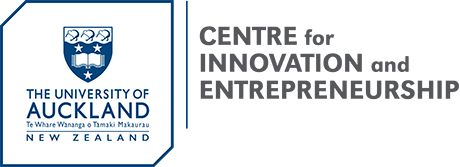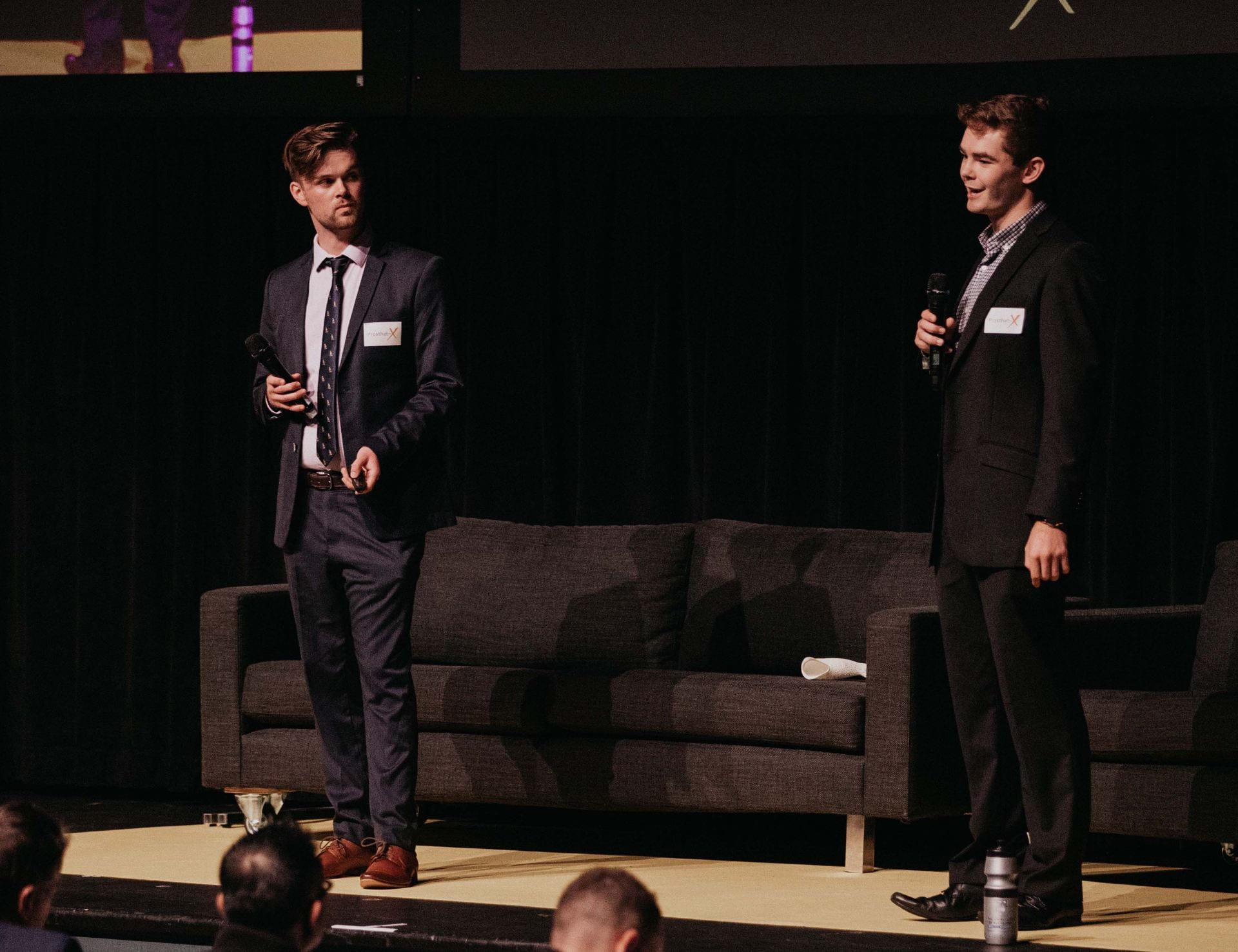
NEWSROOM
Student profile: Prosthetics innovator Connor Talbot
Connor Talbot, a final-year electrical engineering student, is the co-founder of Prosthetex, a start-up that aims to make prosthetics with recyclable materials that are cheaper, faster and more comfortable than existing options. Prosthetex recently won the TechWeek competition ON:Futures in Tech and have been receiving mentorship through our Founders Hatchery. Connor discusses the start of his entrepreneurial journey, what it has taken to get this far and where he is headed next.
How did Prosthetex start?
The venture started as a Part 4 Engineering Project. I proposed the Project myself for my curriculum, so initially it was just me. I researched staff members and reached out to many, but really wanted Prof Olaf Diegel on board as my supervisor due to his expertise in 3D printing. I took the project to UniServices because I saw massive commercialisation potential the more research I did in the space. I pitched my idea to them and now have Maria Jose Alvarez as our mentor and Commercialisation Manager. I reached out to the Mechanical Engineering department early on looking for someone interested in a prosthetics project and that is how I managed to get Sebastian on board. Sebastian Weaver is my co-founder and is also studying engineering.
What sparked the idea for this venture?
I have always wanted to work in prosthetics from a young age. Over the years however, my passion for engineering waned, I was sick of study and wasn’t intrigued by the job field. I saw successful engineers driving around in flash cars but to me they seemed miserable and boring, like a copy of one another. I didn’t want to be like everyone else. So I forgot about Engineering. I wasn’t performing well at university either and I wanted to lead a more simplistic life. I made the decision to take a break from university and started working with animals instead. It was something completely different for me. I took large groups of 6-12 dogs on hikes off-leash out in the New Zealand wilderness, beaches, and bush. This sparked my passion for working with animals, which lead to me working for the SPCA and getting the opportunity to look after all sorts of animals. I saw many injured, mistreated animals during this time which got me thinking about how I could help them, and started thinking about prosthetics again. I saw successful animal prosthetic ventures overseas, did some research and found that no one in New Zealand was doing it. I returned to University. I started pitching my idea to people in industry and they loved it, but with much feedback and thought I decided the field is too young – it is very difficult to get feedback from animals. There are many barriers, and how can you know your solution is actually helping the animal?
When Sebastian came on board we decided to move to human prosthetics as this space was plagued with problems. The majority of amputees suffer pain, discomfort, and frustration caused by their prosthetic socket. This is due to poor fit as the current process creates sockets that are hard and inflexible. We saw the problem and developed a solution using the framework I had set up with 3D printing.
How has being involved with the Centre for Innovation and Entrepreneurship helped you get to where you are?
Being involved with Founders Hatchery helped us to think about our weaknesses and how to address them, and gave us good feedback through mentor meetings.
What advice would you have for anyone else who has an idea but isn’t sure if they have the energy, capability or knowledge to progress it to become a venture?
I’m no expert but I would say that I got very lucky with the right time, the right people, and drive. I saw the momentum and jumped onboard and kept it rolling. Love the problem and look at areas outside your own knowledge base. Look where others aren’t. Focus on big problems and see what you can bring to it – maybe by being an outside agent you bring a new perspective because you are not so compartmentalised in your ideas. Knowledge can always be gained so don’t stress because it is an ongoing process. Read as much and absorb as much information as you can. A big part of it is luck, the right time, and seeing opportunity where others don’t.
What inspires you?
People shaping the world and thinking big, like Elon Musk.
What is next for Prosthetex?
Our next steps are to finalise and iterate designs, secure IP, and undergo clinical trials. In the future we can even begin to look into transferring our new knowledge and designs into Animal Prosthetics again.
Hear Connor on Radio New Zealand discussing his ambitions for prosthetics for both people and pets.
Find out more about their TechWeek pitching competition win at ON: futures in tech.


Connor Talbot, a final-year electrical engineering student, is the co-founder of Prosthetex, a start-up that aims to make prosthetics with recyclable materials that are cheaper, faster and more comfortable than existing options. Prosthetex recently won the TechWeek competition ON:Futures in Tech and have been receiving mentorship through our Founders Hatchery. Connor discusses the start of his entrepreneurial journey, what it has taken to get this far and where he is headed next.
How did Prosthetex start?
The venture started as a Part 4 Engineering Project. I proposed the Project myself for my curriculum, so initially it was just me. I researched staff members and reached out to many, but really wanted Prof Olaf Diegel on board as my supervisor due to his expertise in 3D printing. I took the project to UniServices because I saw massive commercialisation potential the more research I did in the space. I pitched my idea to them and now have Maria Jose Alvarez as our mentor and Commercialisation Manager. I reached out to the Mechanical Engineering department early on looking for someone interested in a prosthetics project and that is how I managed to get Sebastian on board. Sebastian Weaver is my co-founder and is also studying engineering.
What sparked the idea for this venture?
I have always wanted to work in prosthetics from a young age. Over the years however, my passion for engineering waned, I was sick of study and wasn’t intrigued by the job field. I saw successful engineers driving around in flash cars but to me they seemed miserable and boring, like a copy of one another. I didn’t want to be like everyone else. So I forgot about Engineering. I wasn’t performing well at university either and I wanted to lead a more simplistic life. I made the decision to take a break from university and started working with animals instead. It was something completely different for me. I took large groups of 6-12 dogs on hikes off-leash out in the New Zealand wilderness, beaches, and bush. This sparked my passion for working with animals, which lead to me working for the SPCA and getting the opportunity to look after all sorts of animals. I saw many injured, mistreated animals during this time which got me thinking about how I could help them, and started thinking about prosthetics again. I saw successful animal prosthetic ventures overseas, did some research and found that no one in New Zealand was doing it. I returned to University. I started pitching my idea to people in industry and they loved it, but with much feedback and thought I decided the field is too young – it is very difficult to get feedback from animals. There are many barriers, and how can you know your solution is actually helping the animal?
When Sebastian came on board we decided to move to human prosthetics as this space was plagued with problems. The majority of amputees suffer pain, discomfort, and frustration caused by their prosthetic socket. This is due to poor fit as the current process creates sockets that are hard and inflexible. We saw the problem and developed a solution using the framework I had set up with 3D printing.
How has being involved with the Centre for Innovation and Entrepreneurship helped you get to where you are?
Being involved with Founders Hatchery helped us to think about our weaknesses and how to address them, and gave us good feedback through mentor meetings.
What advice would you have for anyone else who has an idea but isn’t sure if they have the energy, capability or knowledge to progress it to become a venture?
I’m no expert but I would say that I got very lucky with the right time, the right people, and drive. I saw the momentum and jumped onboard and kept it rolling. Love the problem and look at areas outside your own knowledge base. Look where others aren’t. Focus on big problems and see what you can bring to it – maybe by being an outside agent you bring a new perspective because you are not so compartmentalised in your ideas. Knowledge can always be gained so don’t stress because it is an ongoing process. Read as much and absorb as much information as you can. A big part of it is luck, the right time, and seeing opportunity where others don’t.
What inspires you?
People shaping the world and thinking big, like Elon Musk.
What is next for Prosthetex?
Our next steps are to finalise and iterate designs, secure IP, and undergo clinical trials. In the future we can even begin to look into transferring our new knowledge and designs into Animal Prosthetics again.
Hear Connor on Radio New Zealand discussing his ambitions for prosthetics for both people and pets.
Find out more about their TechWeek pitching competition win at ON: futures in tech.
EMAIL
CIE@AUCKLAND.AC.NZ
POSTAL ADDRESS
THE UNIVERSITY OF AUCKLAND BUSINESS SCHOOL
PRIVATE BAG 92019, AUCKLAND













